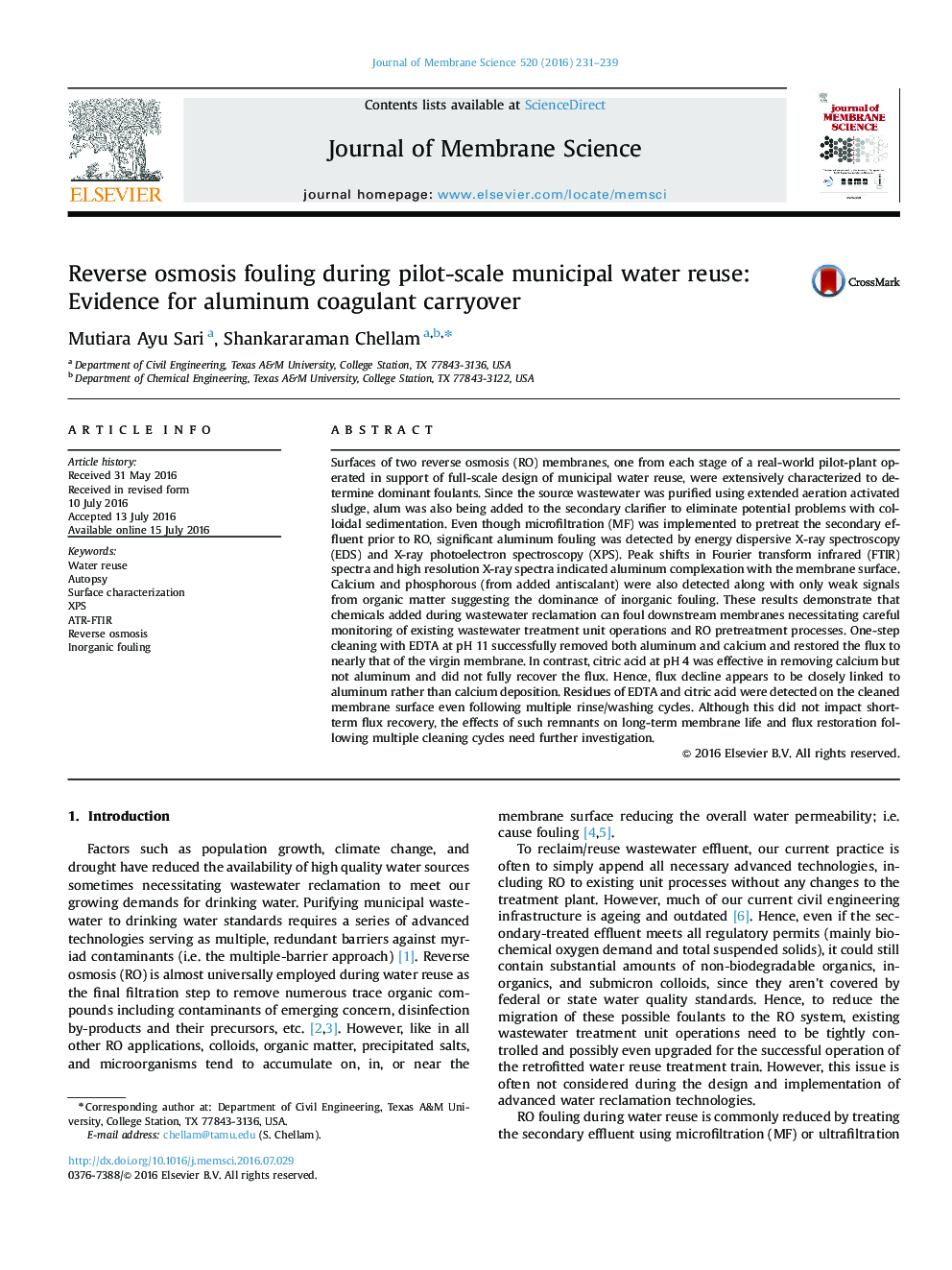| کد مقاله | کد نشریه | سال انتشار | مقاله انگلیسی | نسخه تمام متن |
|---|---|---|---|---|
| 632162 | 1455979 | 2016 | 9 صفحه PDF | دانلود رایگان |
• Membrane autopsy by FTIR and high resolution XPS can detect dominant foulants.
• Aluminum fouling was dominant for reverse osmosis during wastewater reclamation.
• Chemicals added for wastewater treatment and pretreatment can foul membranes.
• Residues of cleaning agents remained on the membrane even after multiple rinses.
• Tight process control of wastewater treatment unit operations necessary before reuse.
Surfaces of two reverse osmosis (RO) membranes, one from each stage of a real-world pilot-plant operated in support of full-scale design of municipal water reuse, were extensively characterized to determine dominant foulants. Since the source wastewater was purified using extended aeration activated sludge, alum was also being added to the secondary clarifier to eliminate potential problems with colloidal sedimentation. Even though microfiltration (MF) was implemented to pretreat the secondary effluent prior to RO, significant aluminum fouling was detected by energy dispersive X-ray spectroscopy (EDS) and X-ray photoelectron spectroscopy (XPS). Peak shifts in Fourier transform infrared (FTIR) spectra and high resolution X-ray spectra indicated aluminum complexation with the membrane surface. Calcium and phosphorous (from added antiscalant) were also detected along with only weak signals from organic matter suggesting the dominance of inorganic fouling. These results demonstrate that chemicals added during wastewater reclamation can foul downstream membranes necessitating careful monitoring of existing wastewater treatment unit operations and RO pretreatment processes. One-step cleaning with EDTA at pH 11 successfully removed both aluminum and calcium and restored the flux to nearly that of the virgin membrane. In contrast, citric acid at pH 4 was effective in removing calcium but not aluminum and did not fully recover the flux. Hence, flux decline appears to be closely linked to aluminum rather than calcium deposition. Residues of EDTA and citric acid were detected on the cleaned membrane surface even following multiple rinse/washing cycles. Although this did not impact short-term flux recovery, the effects of such remnants on long-term membrane life and flux restoration following multiple cleaning cycles need further investigation.
Journal: Journal of Membrane Science - Volume 520, 15 December 2016, Pages 231–239
